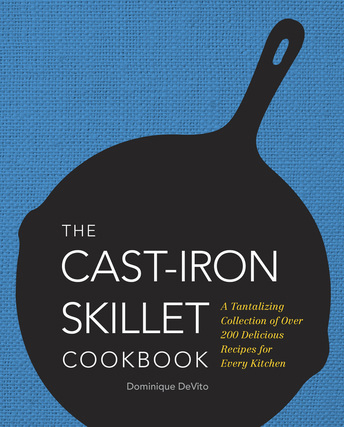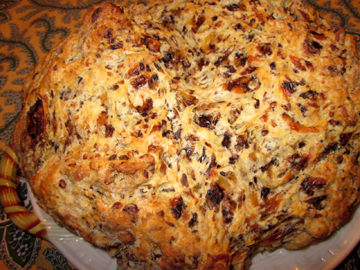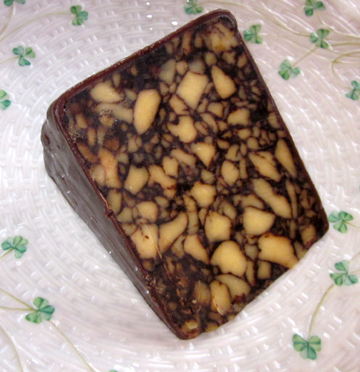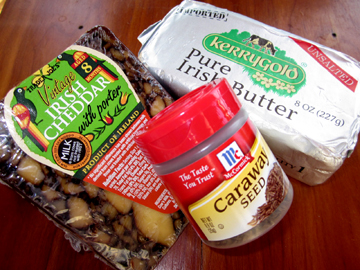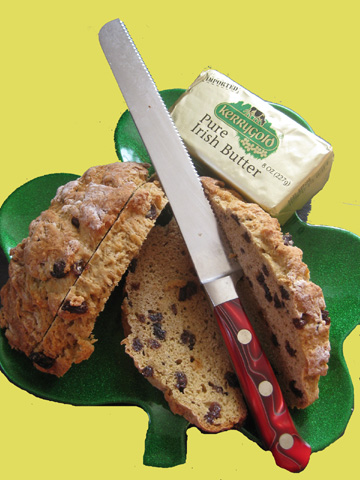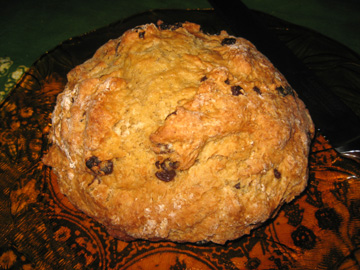A friend recently decided to outfit a new kitchen and asked for my advice. She was getting ready to purchase a high-end set of cookware, she informed me, and wanted to know what brand I recommended.
I dismayed her by telling her that I wouldn’t recommend purchasing one full set of ANYTHING. Instead, I thought (and still think) that a kitchen needs a little bit of a lot of types of cookware.
I like my stainless-steel saucepans. I like to have both a nonstick and a regular frying pan. I like a huge pot for stocks and soups. And I believe that every kitchen needs a bit of cast-iron.
In my case, that cast-iron consists of one enameled Dutch oven in a convenient size (about 5 quarts; larger is hard to lift!) and black cast-iron skillets of varying sizes.
Most of my skillets came from relatives or tag sales, although I do have one new one, from Lodge Manufacturing Company.
I use my skillets for a variety of tasks—most commonly for toasting nuts or for baking cornbread, frittatas, or upside-down cake.
Reading Dominique DeVito’s brand-new Cast-Iron Skillet Cookbook, which publisher Cider Mill Press sent me for review, has given me a number of additional ideas for cast-iron cookery.
In addition to my favorites, DeVito provides cast-iron-friendly recipes for unexpected dishes: casseroles; coffee cakes; vegetable roasts; and a variety of breads, from dinner rolls to Indian naan.
I have to admit it would NEVER have occurred to me to try preparing General Tso’s Chicken in my cast-iron pans—or to bake a giant chocolate-chip cookie.
Most helpful of all, DeVito provides hints on caring for cast iron. I knew one wasn’t supposed to wash these pans with soap. It turns out that I have been seasoning my pans incorrectly all these years, however!
If you’d like new ideas for your old pans, or if you are thinking of adding a cast-iron pan to your cookware collection, leave a comment below. The comment can describe your own favorite use of cast iron—or anything else you would like to express.
Cider Mill Press has generously promised to send a copy of the cookbook to one of the commenters. Please comment by next Tuesday, March 24. The next morning I will select one comment (randomly, I promise!) and get in touch with the winner to get his or her mailing address.
Meanwhile, I leave you with a recipe from the cookbook suitable for this week. I have already made my own favorite soda bread, but I’m seriously considering trying this savory take on a Saint Patrick’s Day favorite as well.
Let me know if you make it—and don’t forget to sing a few sentimental Irish (or Irish-American) songs today. My solo for our local Saint Patrick’s Day concert will be George M. Cohan’s “Mary.”
And the whole assembled group will sing “An Irish Blessing.”
Courtesy of The Cast-Iron Skillet Cookbook
Ingredients:
3 cups white flour
2 cups spelt flour
3/4 cup rolled oats (not instant)
2 tablespoons sugar
1 tablespoon baking powder
1 teaspoon salt
1 teaspoon baking soda
8 tablespoons (1 stick) butter, melted and cooled
2-1/2 cups buttermilk
1 large egg, lightly beaten
1/4 cup chopped chives
1-1/4 cups grated sharp white cheddar cheese
freshly ground pepper
Instructions:
Preheat the oven to 350 degrees.
In a large bowl, combine the flours, oats, sugar, baking powder, salt, and baking soda. Whisk to combine thoroughly. In another bowl, combine the butter, buttermilk, and egg.
Add the milk mixture to the flour mixture, and stir vigorously to blend. Dough will be sticky. Stir in the chives and 1 cup of the grated cheese.
Liberally grease a 12-inch cast-iron skillet with butter. Scoop and spread the dough into the skillet. Grate pepper over the top; then sprinkle the remaining cheese over it. Using a sharp knife, make an “x” in the center, about 1/2-inch deep, to settle the cheese further into the dough as it cooks.
Bake in the oven for about 1 hour and 15 minutes until the bread is golden on top and a toothpick inserted in the center comes out clean. Allow to sit in the skillet for a few minutes before serving.
Makes 1 loaf.
